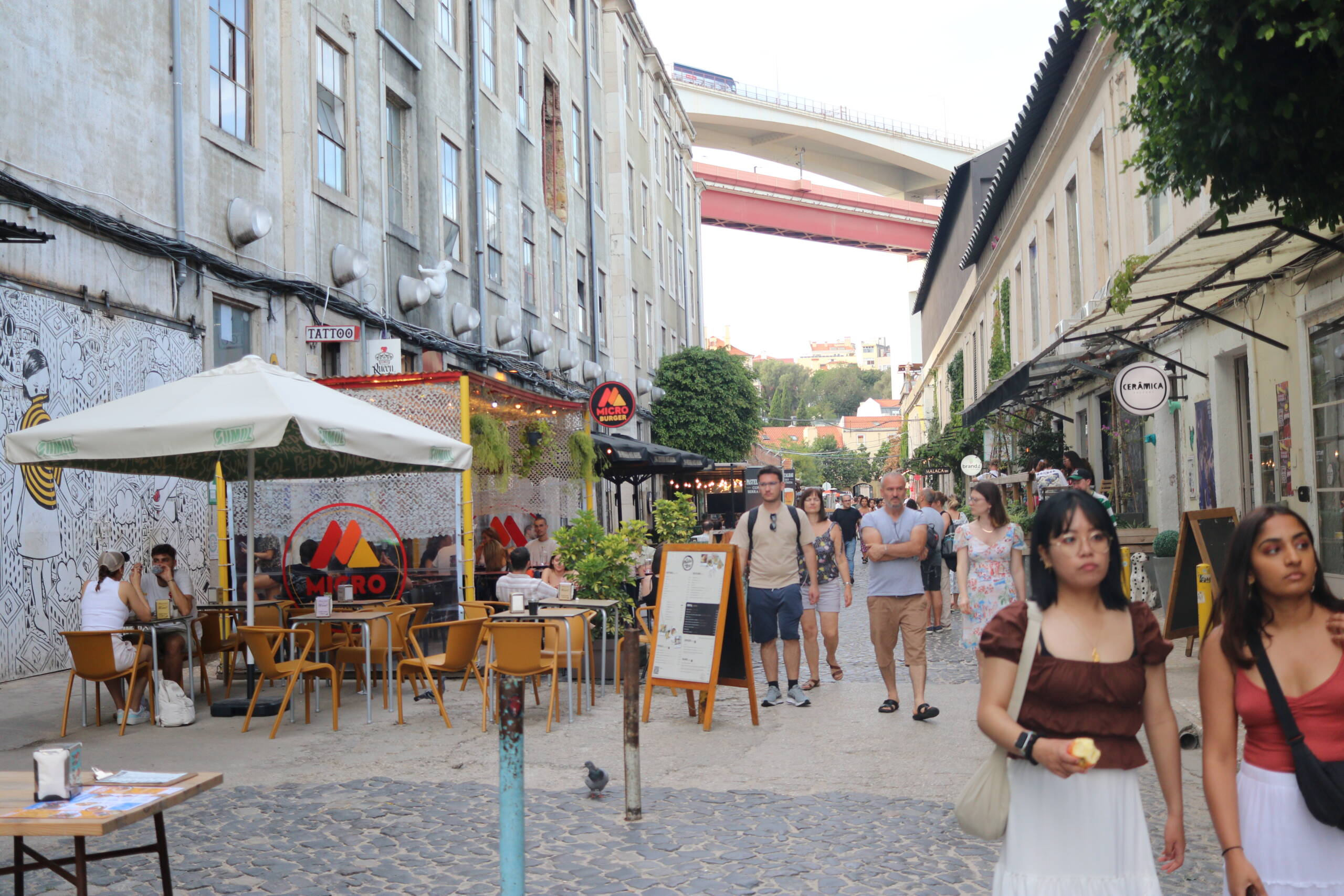Lisbon is a city that thrives on contrasts—modern art rubbing shoulders with centuries-old traditions, quiet cobbled streets unfolding into bursts of color and sound, the everyday constantly blending with the extraordinary. Over the past few days, I’ve wandered from riverside installations to hidden lanes, and what struck me most is how each corner seems to hold a story. Sometimes that story is told through steel, light, and fabric. Sometimes, it’s in the swirl of a coffee cup.

Take the riverside walk near the MAAT museum, where you stumble on sculptures that seem too surreal to belong outdoors. There’s the giant golden ring crafted from car rims, crowned with a sparkling “diamond” made of plastic cups—a playful jab at consumer culture. Just steps away, two colossal metallic faces stare silently, their latticed masks catching the sun. These aren’t just sculptures; they’re interruptions, jolts of imagination that stop you mid-stride. And inside the museum itself, Joana Vasconcelos’s Valkyrie Octopus stretches its luminous, tentacled body across the gallery like a glowing carnival creature, reminding you that Lisbon’s creativity has no limits.
Then there are the streets. Narrow lanes slope down toward the Tagus, flanked by tiled facades and balconies spilling with laundry and flowers. A woman pauses to photograph the light; others sip espressos at corner cafés shaded by umbrellas. These small fragments of daily life—half shadow, half sunshine—are what anchor Lisbon in memory. It’s not just about viewpoints and monuments, though the city is rich with both. It’s about atmosphere, rhythm, and the way the streets make you slow down.
And finally, there’s the coffee ritual. No visit is complete without stepping into A Brasileira, Lisbon’s most storied café. The façade alone feels like a prologue—ornate stonework, carved figures, and those iconic green doors. Inside, you’re greeted by tiled floors, mirrored walls, chandeliers, and shelves lined with green tins of coffee, all gleaming with the polish of history. The espresso—“bica,” as Lisboetas call it—is dark, smooth, and commanding, the kind of coffee that speaks of decades of refinement. Tourists come for the history, locals come for habit, and together they weave the café into something timeless. Sitting there, sipping slowly, I felt not just like a visitor but a small part of Lisbon’s ongoing story.
Good times in Lisbon aren’t loud or dramatic. They happen in the pauses: beneath an oversized sculpture, under a string of glowing lights in a gallery, on a sunlit street corner, or with a cup of coffee that connects you to generations before. It’s a city that doesn’t rush you, but instead reminds you to savor—art, life, and yes, even espresso. And maybe that’s why, as soon as you leave, you’re already planning when you’ll return.
Leave a Reply